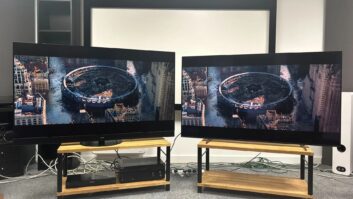Kyoto, Japan — This ancient city that in 1997 yielded the Kyoto Protocol, the first international agreement to reduce greenhouse gases that contribute to global warming, also serves as the hub for one of Panasonic’s most ambitious ecological initiatives: the use of fuel cells to power private homes.
As part of it’s
, Panasonic has begun been rolling out its latest generation of polymer electrolyte fuel-cell co-generators after two years of extensive field testing in Japan. The fuel-cell system generates electricity and hot water through the chemical reaction of hydrogen with oxygen, powered by natural gas. The result is enough power to drive a home’s heating, air conditioning and hot water systems while simultaneously reducing energy consumption by an average of 22 percent and carbon dioxide emissions by 12 percent, compared with all conventional systems, based on the results of the testing.
When compared with the most common conventional thermal electric power plants, the Panasonic system increased energy conservation by up to 30 percent, reduced CO2 emissions by up to 40 percent and reduced nitrogen oxide emissions by up to 90 percent.
Panasonic’s new manufacturing facility in Kusatsu City, Shiga Prefecture, went online last month, producing about three seventh–generation systems a day. Each system consists of two units: a generator designed around cell stack technology that employs membrane electrode assemblies, and a tank that collects the byproduct of the fuel production — hot water — which is stored for household use.
On average, Panasonic claims the system can cut 3,662 kWh of primary energy use per house, per year and cut 1,175 kilograms of CO2 emissions, compared with a house fueled by a thermal power generation system. That translates to an energy-cost savings of about 600,000 yen (slightly more than $600) per year. At a cost of about $6,000, the system should pay for itself in 10 years, according to the company.
Panasonic will continue field testing the systems through March 2009, with a projected full-scale commercial rollout in fiscal 2010. Regional power utility companies will be distribution partners and will install and maintain the systems. Other companies expected to market fuel-cell systems for the home in Japan include Toshiba, Sanyo Electric, Ebara and Toyota.
The Japanese government kicked in subsidies for the cost of the units for field testing and will continue to subsidize the systems at some level for consumers who wish to install the systems in their homes. The first fuel-cell system was installed in then-Prime Minister Junichiro Koizumi’s new official residence in 2005.
At a ceremony marking the shipment of the first system earlier this month, Panasonic president Fumio Ohtsubo declared: “I am convinced that fuel cells will be a front-runner for power generation in the 21st century, among various approaches to the creation of energy.”
Panasonic projects that the commercial rollout will enable self-sustainable prices for the units based on the step-by-step breakthrough cost reductions of mass production by 2012.
The company projects shipments of between 3,000 and 5,000 systems in fiscal 2010, ramping up to 60,000 to 100,000 by 2015 and 700,000 units by 2020.
While there are no immediate plans to market the units overseas, Tsuneo Shibata, the project leader for Panasonic’s fuel-cell initiative until last year and who now acts as an adviser, said he felt it was inevitable that the systems would eventually reach other countries, and that “China would be a very likely immediate candidate, because fuel costs are very high there and it is rich in natural gas.”
Shibata, whose home in HyogoPrefecture has been powered by the fuel-cell system since June, allowed visiting journalists to tour his home and experience the system at work.












